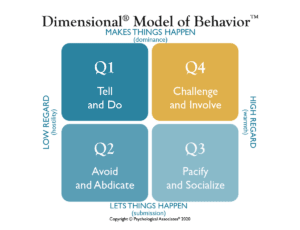Five Generations in the Workplace
For the first time in history, there are five different generations in the workplace. And given the rate at which work itself is changing (hello hybrid work!), it’s no wonder intergenerational conflict has become more prevalent.
So, who exactly are these five generations that make up the modern workplace?
- Traditionalists/the Silent Generation (born 1925-1945) and Baby Boomers (born 1946-1964) are often in leadership positions. They are used to working with others like themselves: hard-working, used to top-down management; tend to stay at one organization for a long time.
- Gen X (born 1965 – 1980) has a general preference for efficiency and independence. Unlike Boomers, Gen X may be quick to move on if an employer fails to meet their needs.
- Millennials (born 1981-1996) are apt to question the status quo. They value work/life balance, meaningful work, and collaboration (vs. being told what to do).
- Gen Z (Born 1997-2015) are unwilling to settle for a workplace unless it meets their expectations. They have a low tolerance for unsupportive management and want opportunities to learn and grow. There’s a good chance they’ve never worked in a “traditional” office. Their ideas about work may seem foreign to their Traditionalist counterparts.
The differences above appear stark, though, of course, they’re all generalizations. And in fact, there’s plenty of evidence to suggest the distinctions between generations are overblown. But the question remains, how do senior leaders deal with a younger workforce? Is the generational gap between Boomers and Gen Z something new? And can we truly rely on generational stereotypes when dealing with individuals in the workplace? We explore these questions in this case study.
Generational Conflict
Recently, Katie and Alex were hired at about the same time by a research organization. Their manager, John, has been with the company for 25 years. Katie and Alex are each in their 20’s. They both did very well in college and said in interviews that they wanted to work for John’s company because it had the best career opportunities. They felt the work would be interesting and fulfilling. Little did John know that this rosy beginning would soon morph into generational conflict!
Brash Behavior
Early on, John was struck by their confidence and assertiveness. He’s more used to new hires easing into their jobs and keeping their heads down until they learn the ropes. Remembering his first job, he had hoped to remain unnoticed until he figured out what his boss was looking for in him.
Outspoken Person
From the start, Katie and Alex have spoken out at team meetings. They have given forceful opinions and have been dismissive at times about standard practices within the department. On his first day, Alex painted a picture for John of his own future at the company, expressing his goal to become a vice president in four years.
Recently, John had to return a report to Katie to redo because she had changed the organizational layout without discussing it with him. While she agreed to change it back, he felt she wasted time not asking him before changing it.
Clash of the Generations
John feels he is open-minded but admits that the style of Katie and Alex bothers him. He wonders if this is a generational issue. He believes he can appreciate their intelligence and fresh perspective but feels the two may be headed for trouble in their work relationships. What Q4 leadership skills could you employ to handle this intergenerational conflict if you were in John’s place?

Intergenerational Conflict Is Not New
While having five generations in the workplace may be a new phenomenon, dealing with intergenerational conflict is not. And while each generation comes with its own preferences and habits, as leaders, we need to work with individuals, not generational stereotypes.

The assertive and outspoken behavior shown by Katie and Alex may appear to John as bold and presumptuous. However, leading with a Q4, open style can influence others’ behavior and promote a more collaborative workplace.
John may be surprised to see Q1 behavior from employees early in their careers. Previously it was more common to see this behavior among more tenured, long-term team members and some managers. But whether this behavior comes from Gen X, Gen Y, or Gen Z, behavior is behavior. And the Q4 leader knows how to adapt successfully no matter what generation the employee is who exhibits it.
New Generation Management
How should a manager respond to brash, presumptuous behavior? Let’s consider three approaches.
The Aggressive Approach
Suppose John’s response is aggressively Q1 (characteristic of many managers when faced with similar behavior). In that case, he will attempt to put the two in their place. This head-to-head confrontation will probably fail in the end. This early in their careers, Katie and Alex could choose to leave the organization for a more accepting environment. High potential might be walking out the door.
The Passive Approach
A Q2 apathetic response by John invites Q1 behavior from Katie and Alex. Q3 will likely do the same. The result could antagonize other members of John’s staff. They might resent what they see as John’s indulgence of disagreeable or disruptive behavior.
The Q4 Collaborative Approach
By contrast, a Q4 approach will attempt to work with the two to fit in better, so the organization can benefit from their ideas and fresh outlooks. A Q4 leader does not feel threatened by behavioral differences. He tries to influence to achieve positive outcomes.
In this situation, John can take several steps. He should give Katie and Alex more, not fewer, opportunities to be involved and interact within the department. This way, older colleagues may become more used to their outlook. And Katie and Alex are likely to modify their own behavior, especially if guided by John’s Q4 example.
Turn Differences into Win-Win
Alex wants to be vice-president within four years? Not likely, but rather than scoff or put Alex down, John should be an active performance coach for both of them. He should discuss career paths and goals within the organization, probing to investigate realistic options and collaborating on a path to success. This will keep Alex’s aspirations high, but aligned with the organization’s needs and opportunities.
As for Katie’s reorganization of the proposal without checking first, John should take the time to coach her about the importance of company-wide standards. But he should also encourage her creativity by showing that he welcomes new ideas and is willing to approve ones that work.
Dealing with Employee Pushback
Unlike Q1, Q2, and Q3 leaders, the Q4 leader probes to understand people’s needs. Then he is responsive to them, looking for win-win assignments that can benefit both the people and the organization.
In this scenario, John can facilitate the growing process. Rather than stifle confidence and bold thinking, he can help shape the abilities of potential future leaders of the company.
Leading Across Generations
Conflict handled well is healthy for an organization. New ideas, innovation, and growth can emerge rather than doing things the way they’ve always been. Use your Q4 skills to turn generational conflict from a negative into something productive.
Beyond Managing Intergenerational Conflict
Now that you understand how to resolve intergenerational conflict, we have three possible next steps to suggest.
Learn Q4 in More Depth
If you’d like more depth on how Q4 leadership operates and resolves conflict, check out our Leadership Through People Skills book.
Learn More Leadership Skills
Our Leadership Learning page has many more case studies on various challenges leaders face in the workplace. You’ll also find white papers, surveys, and more to help you improve your leadership skills.
Put Your Leadership Knowledge into Action
If you are ready to put your leadership skills into action in the workplace, check out our Q4 Leadership Workshops. You’ll gain insight into how you are perceived in leadership interactions, learn new practical leadership skills, and apply those skills to a real-life situation.
Continuous Improvement
Be sure to sign up for our newsletter to stay updated on new ideas you can employ, upcoming events, and more.




